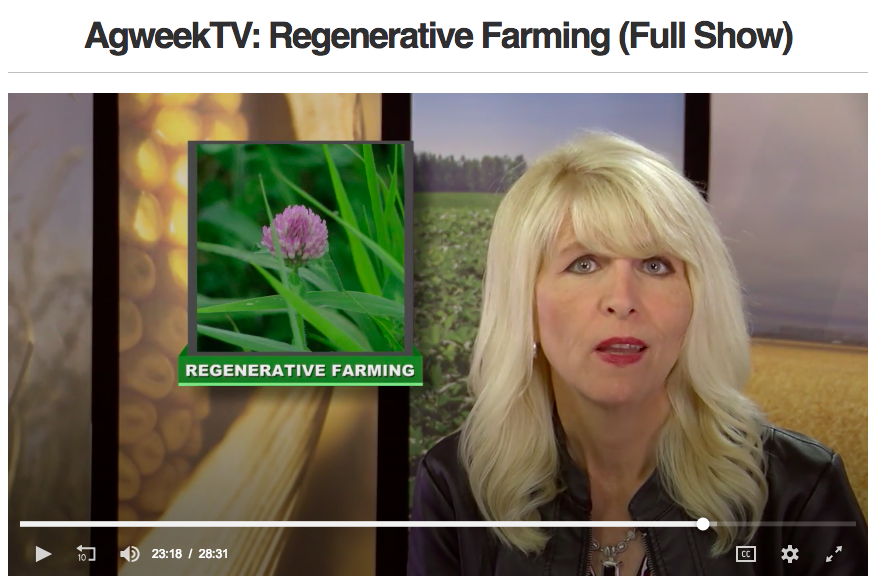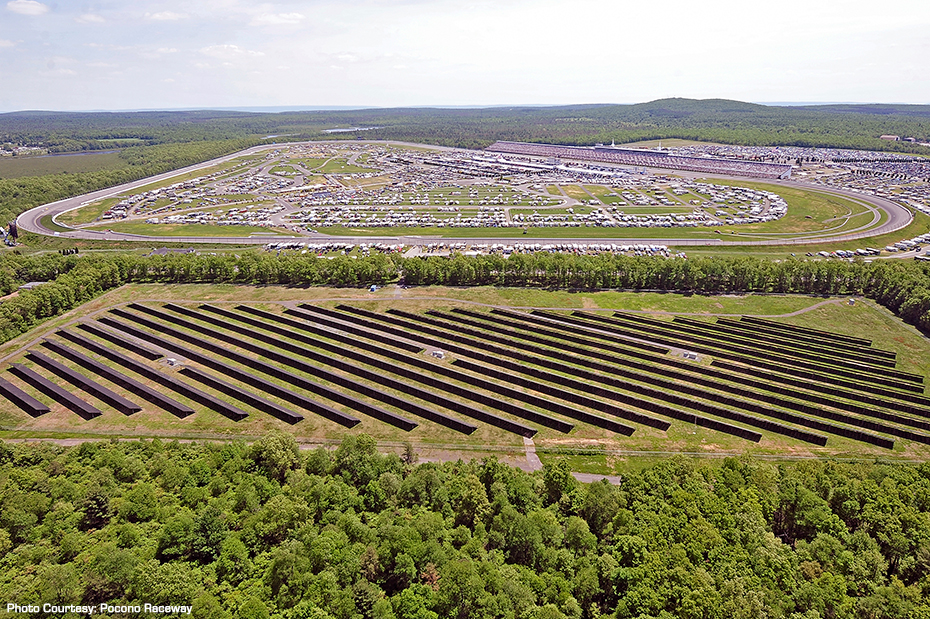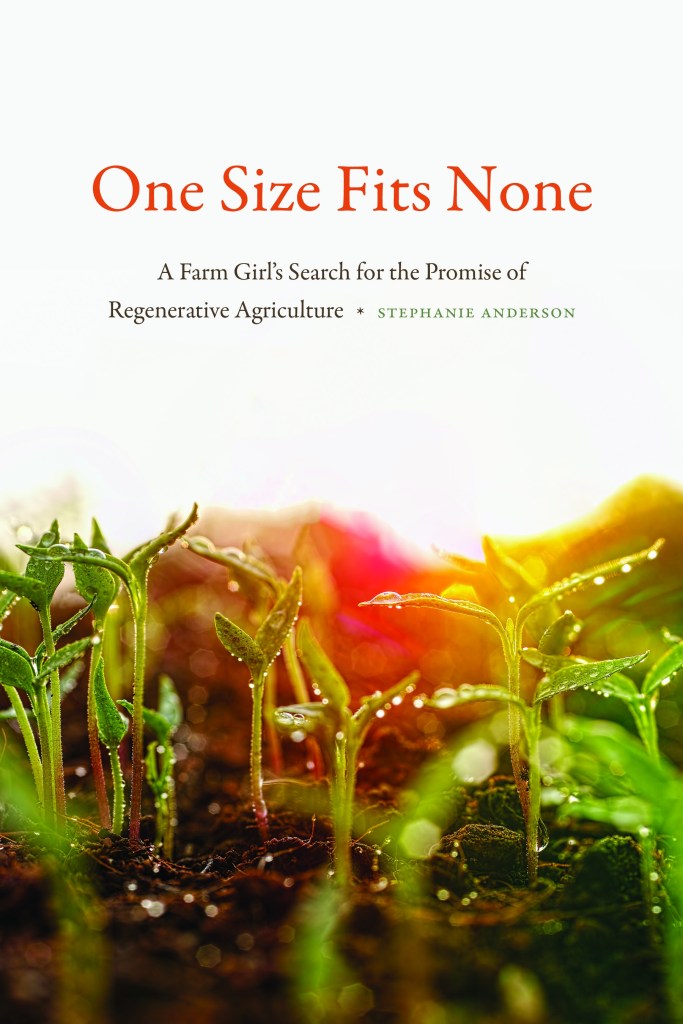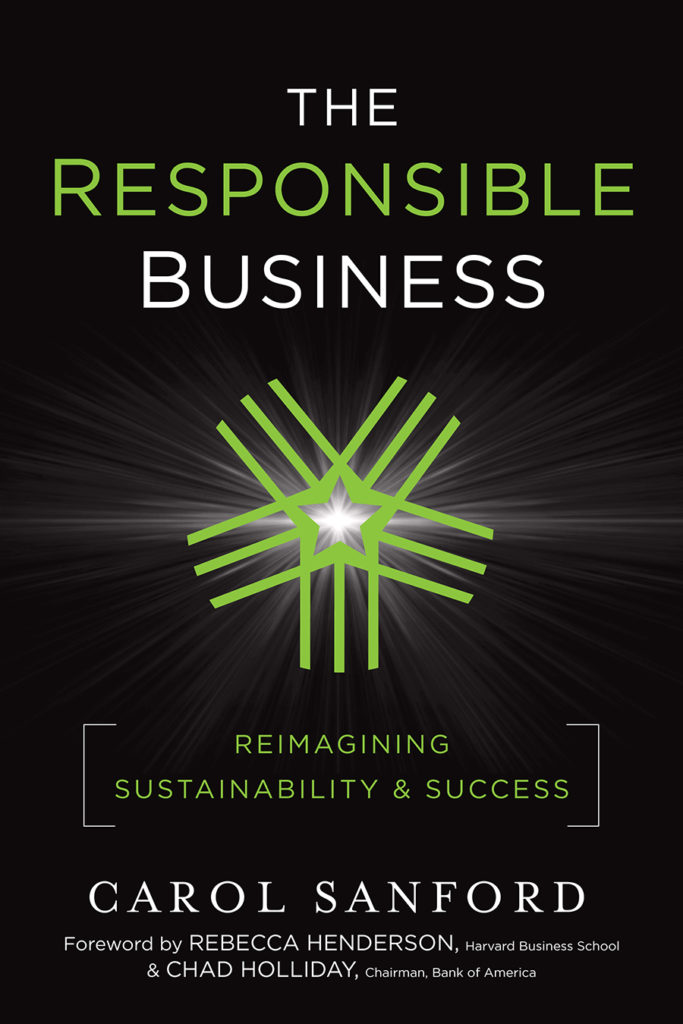Curated top stories in Regenerative Agriculture, Business, and Investing • ethansoloviev.com
$72 Million Ecosystem Benefits, Regenerative Fashion & Cosmetics, and Tickling Trump’s Ear…

Regenerative Agriculture
“Who slashes farmland acreage by three-quarters, jettisons a machinery fleet, and upends field practices, yet watches profits rise by 70 percent?” This is my top article for the month, for 2 reasons:
1. Farmer Del Ficke has an emotional story of personal trauma and regeneration that fed his family farm transformation. His awareness of culture is more nuanced and engaged than most I’ve heard about.
2. The story is emblematic of the “new” face of Regenerative Agriculture, the one that is growing the most quickly with large-scale farmers across the heartland of the United States and farming country in Australia. I’ll write more about this in my final note at the end.
Get ready to get geeky. Farmland LP has released their 2017 Impact Report, which goes deep into Carbon accounting and Ecosystem Service Valuation for their funds. Sneak peak: $74 million in ecosystem services generated since inception… Link – Also written up nicely here: (Organic and Regenerative Agriculture Study Funded by USDA Demonstrates $21.4 Million Ecosystem Benefit on 6,011 Acres Over Five Years)
Very important: Detailed overview of Savory Institute’s Land to Market™ program, the first outcomes-based regenerative ag standard. I think this is the best standard available and the one I recommend supporting. Link

Australian Farmers Driving Up Profits Through Regenerative Agriculture. “While debt has crippled many farmers over the past 12 years, NSW grazier Martin Royds increased his farm’s profits 230 per cent…” Link
Taking natural and organic cosmetic ingredients to the next level – “The ingredients that sustain and enhance people’s lives should also sustain and enhance their planetary home”. Great 3-article series on tropical regenerative agriculture at Finca Luna Nueva in Costa Rica – videos interviews included. Part 1, Part 2, Part 3
Towards Regenerative Fashion: “The North Face Adds Products Made Through Regenerative Agriculture.” I appreciate the clarity that North Face is using to describe the line of Fibershed-sourced wool: They’re still doing a full LCA, but they know the sheep & grazing capture carbon. Link
In case you missed it: The White House’s Deep Decarbonization Plan for the United States, which includes Carbon Farming and Agroforestry. Published 2016… I wonder if anyone in the current White House has read this;) Link
“The Future of Flavor” is regenerative agriculture. I completely agree. Link
“Sustainability isn’t enough” says Minnesota Ranching family. Aiming towards regeneration with no-till, cover crops, and grazing. Also see (despite the reporter’s grimace;) a pretty good video on the same farm on AgWeek TV (skip to 23:14) Link

Regenerative agriculture gets a nod (albeit a strange one sandwiched between techno-fantasies;) in Fast Company: “It’s the year 2038–here’s how we’ll eat 20 years in the future” – Link
Regeneration Canada launches new website, starts planning for 2019 Soil Summit. Link
Conflicting perspectives on drought in Australia – One farmer describes what regenerative grazing and tree planting have done for her land. Link
New book exploring path to regenerative agriculture – I’m looking forward to reading this! Link
Singer-songwriter Jason Mraz practices… regenerative agriculture?!? Link
From the Guardian: “If you want to save the world, veganism isn’t the answer”. While the biodiversity and economic results noted in this piece are impressive, I can only imagine what would happen if the farm used Holistic rotational grazing instead of extensive permanent paddocks. Link
Most people continue to use term “regenerative agriculture” to describe these 3 basic tenets of organic farming. Interesting little video. Link

Verizon Indycars and agriculture? “It will be an organic regenerative farm right outside the raceway gates.” Link
Short and interesting definition of Regen Ag from Modern Farmer, along with a bunch of short and interesting definitions of other ag terms. Link
“We’ve encountered active hostility from conventional farmers; but the regenerative techniques and science are coming out of both the organic and the conventional sectors. This is a huge opportunity to start bridging that gap.” Nice interview on soil, and the potential for transforming agriculture. Link
Regenerative agriculture is gaining momentum in Australia. A state Agriculture and Food Minister officially launched a Regenerative Farmers Network, saying “What I see very much from the farmers in the regenerative space is they’re not out there preaching to other people about what they should do, they are leading by example.” (Plus some harsh zings at Biodynamics;) Link
Tickling Trump’s ear – a fascinating editorial in a small-town USA newspaper tackles national politics, international trade wars, and (!) the promise of regenerative agriculture. Fascinating to see how far and wide the meme is spreading! Link
The Garden at the End of the World – Patagonia’s new piece promoting Regenerative Organic Agriculture in name, though mainly a sweet little story of a biointensive garden in Patagonia, Chile. Link
Podcasts
(Top podcast this month) Investing in Regenerative Agriculture – Follow-up on a story from last month Koen van Seijen interviews Satya Tropathi, chair of the board of the Sustainable India Finance Facility, a partnership between the United Nations Environment Programme, World Agroforestry Centre and BNP Paribas. Link
GreenBiz talks to Regen Network CEO Gregory Landua about blockchain and regenerative ag (skip ahead to 29:30 to hear this segment). They’ll be pitching at VERGE 2018. – Link
Exploring the connection between Organic and Regenerative Agriculture – Supplyside West Podcast with Jeff Moyer of the Rodale Institute – Link
Kiss the Ground on Food Startups Podcast – how to reverse climate change! Link
Agroforestry
Hot not-even-on-the-press yet: Agroforestry Standards for Regenerative Agriculture. Journal article, pre-peer-review, very cool and important – Link
Innovation Forum: Mars, Nestlé, Unilever, Olam, Coca-Cola, and L’Oreal – At least on paper, these companies are beginning to explore regenerative agriculture and agroforestry – as they should be. Any deeper investigation I’ve done have indicated that their aspirations are far beyond their effects, but perhaps things are changing. Many will be speaking at the “Sustainable Landscapes Conference 2018” – Link
“6 reasons why the practice of Silvopasture will help save modern farming” – It’s important to see agroforestry systems that produce animal products getting more attention. With increasing global demand for meat, and the “animals are bad” narrative continuing to gain momentum, a third viewpoint can help reconcile the situation. Well worth the read. Link
Enhancing cacao production through regenerative agriculture. Great to have agroforestry & regenerative agroforestry integrated around a cacao cash-crop. Link

Regenerative Investing & Business
Impact investing plants seeds of growth for small-scale farmers – some decent coverage from the Financial Times, more on ag-tech but with a regenerative farming mention for SLM Partners. Link
Nearly 400 investors with $32 trillion in assets step up action on climate change – Link and Link. Good start.
1/8 of Global Market Cap Now Committed to Science-Based Targets. An international collaboration between CDP, the United Nations, World Resources Institute and WWF independently assesses and verifies company emission reduction targets. Eventually, this group could even assess the positive carbon-sequestering activities that companies will integrate into their systems of supply. Link
With new $35m equity investment, California Olive Ranch says it’s looking towards Regenerative Agriculture. Olive trees do indeed have carbon-sequestering potential, but given the long-term drought situation and the predilection of California olive producers to plant massive monocultures (see photo;) it seems like a stretch. But I’d love to be proven wrong! Link

A new proposal from the editor of ImpactAlpha: Rename ‘Generation Z’ to the “reGeneration”. Plus 6 investment trends to watch – Link
Breaking News from AgFunder: “FoodShot Global Launches Multi-Stakeholder Platform to Invest in ‘MoonShots for Better Food’” There’s a lot more capital flowing into ag tech than regenerative ag. Will regen ag entrepreneurs rise to take on challenges like these? Link
Dear Paul Hawken, I disagree: Regeneration is not “all about meeting current human needs.” Regeneration is much more than that, focusing on the potential of whole living systems. Aiming for people get to some minimum set of needs met is not enough. Nevertheless, I’m excited to see the next book:) Link to Interview
Management & Governance: Do you know how Holacracy is different from Regenerative Business? Link
Ethan Soloviev’s big-picture interpretation of this month’s news:
There are 5 primary intellectual and practical Lineages of people who are using the term “Regenerative Agriculture”. Each Lineage has a different definition, farming philosophy, and approach to growing their community. In the last year, one of them is quickly (but quietly) out-growing the others. I’ll write about these in more detail in another post soon, but here are the Five Lineages of Regenerative Agriculture:
1. Rodale Organic – Basic organic agriculture practices promoted by Rodale since the 1970s, re-dubbed “Regenerative Organic” in recent years and requiring the tenets of organic agriculture as a baseline. The focus is soil. CPG brands have been strongly promoting this lineage, most notably through the Regen Organic Certification.
2. Permaculture/Regrarians – Permaculture as a global movement loves the IDEA of regenerative agriculture, but for the most part fails to achieve significant levels of agricultural production. Regrarians, emerging from permaculture, has for decades integrated Holistic Management, Keyline, and ecological design processes at farm-scale around the world.
3. Holistic Management – promoted by both the Savory Institute and Holistic Management International, focusing on a comprehensive decision-making framework designed for animal-centric ecosystem regeneration. Last month Savory released their Land to Market Ecological Outcome Verification system, with backing of some significant food brands.
4. Regenerative Paradigm – over 50 years ago, the term ‘Regenerative’ was developed by Charles Krone to describe a radically different paradigm of approaching human and systems development. Guided by the Carol Sanford Institute, a small but effective community of practice including Regenesis, Terra Genesis International, and others has applied the paradigm to Business, Design, Planning, Education, and Agriculture.
5. Soil Profits / No-Till / NRCS – Typified and led by Ray Archuleta, Gabe Brown, and others, this lineage draws practices and inspiration from other Lineages but appeals strongly to conventional farmers by eschewing the dogmas of organic agriculture and focusing on bottom line profits through increased soil health.
This final Lineage is the one that I see quietly experiencing exponential growth – dominating the Regen Ag mentions of middle-America newspapers and actually being adopted by mainstream conventional farmers.
By bypassing prejudices against ‘organic’, and allowing farmers to still use synthetic inputs, this lineage is received openly enough to then show the economic arguments for decreasing inputs and improving soil through good crop rotation, no-till, and grazing practices
The narrative that something as effective and sexy as “Regenerative Agriculture” is available to conventional farmers is a big deal. While I think this lineage misses opportunities through its incompleteness and dis-integrative approach, I believe it is incredibly important for the world to watch and support its growth and evolution.
– Ethan Soloviev
P.S. If you’re interested in some in-person learning, I recommend the upcoming Regenerative Earth Summit – I’ll be speaking there along folks from Patagonia, North Face, Eileen Fisher, Savory Institute, Fair Trade USA, Rodale Institute, and the American Sustainable Business Council. I hope to see you there!
If you enjoyed this issue of Regeneration Newsroom, please forward this to a friend that would find the information valuable!
Sign Up | Follow on Twitter | Read on Medium
Need to contact me? Have any feedback on coverage? Email me at e@ethansoloviev.com


